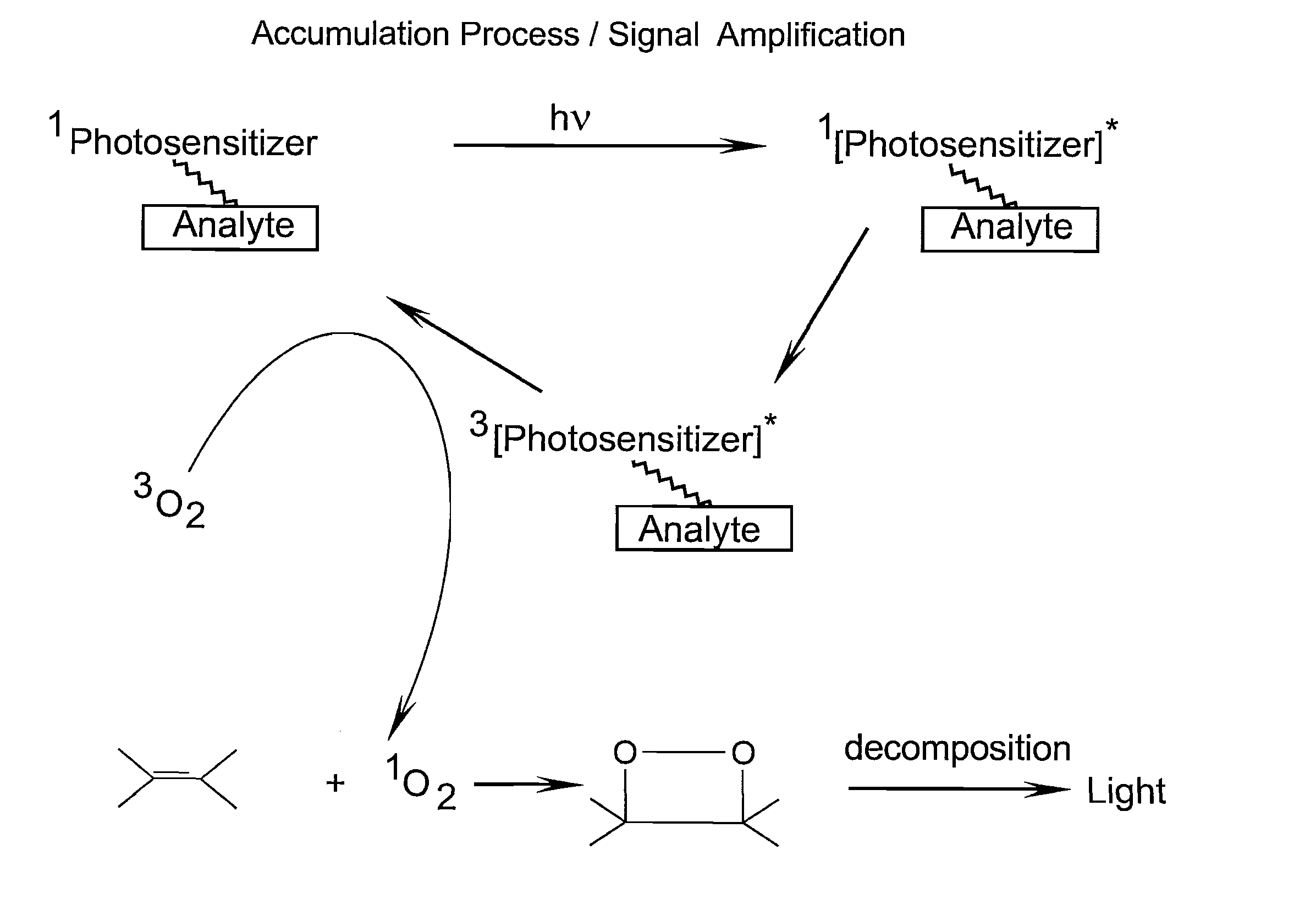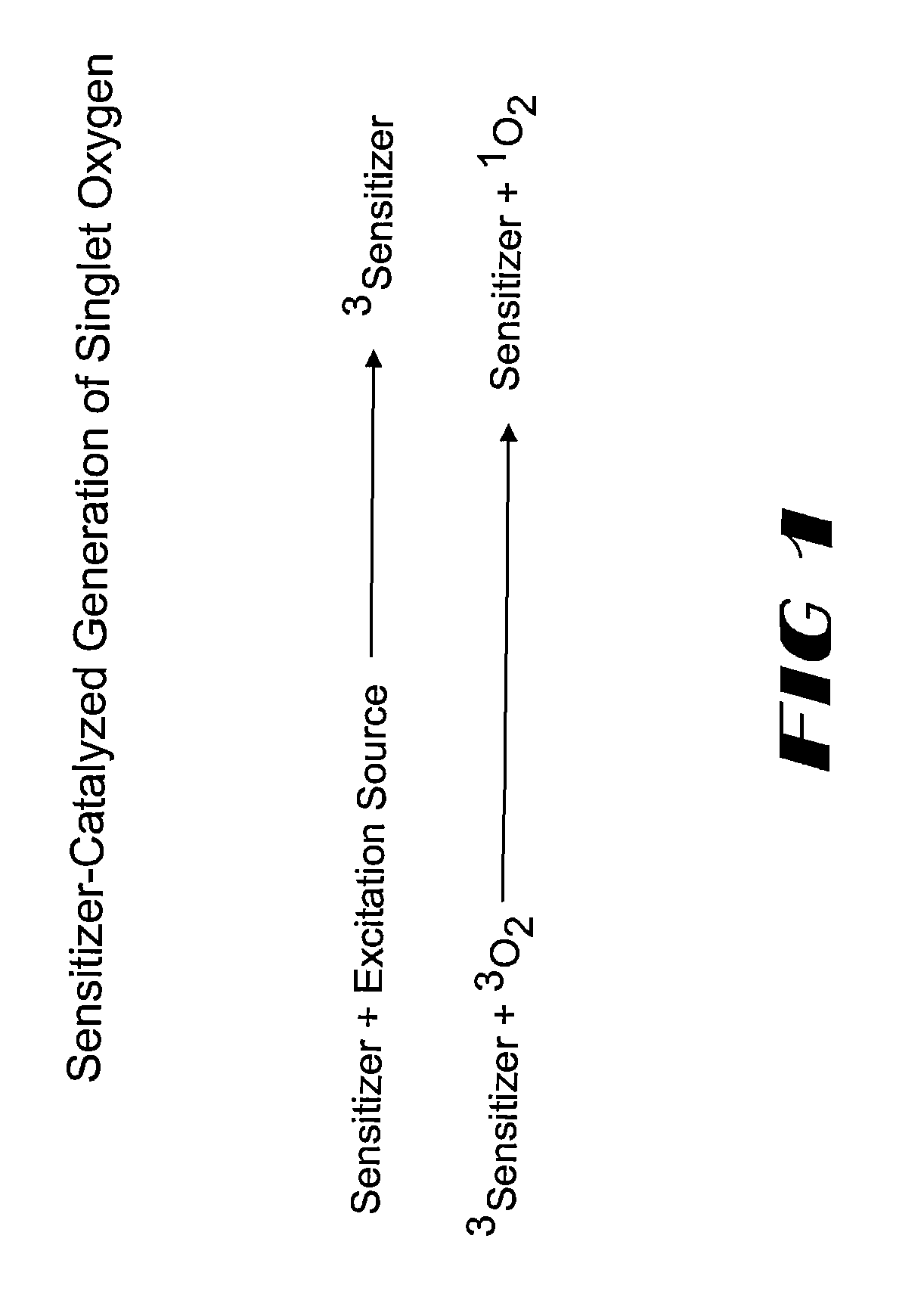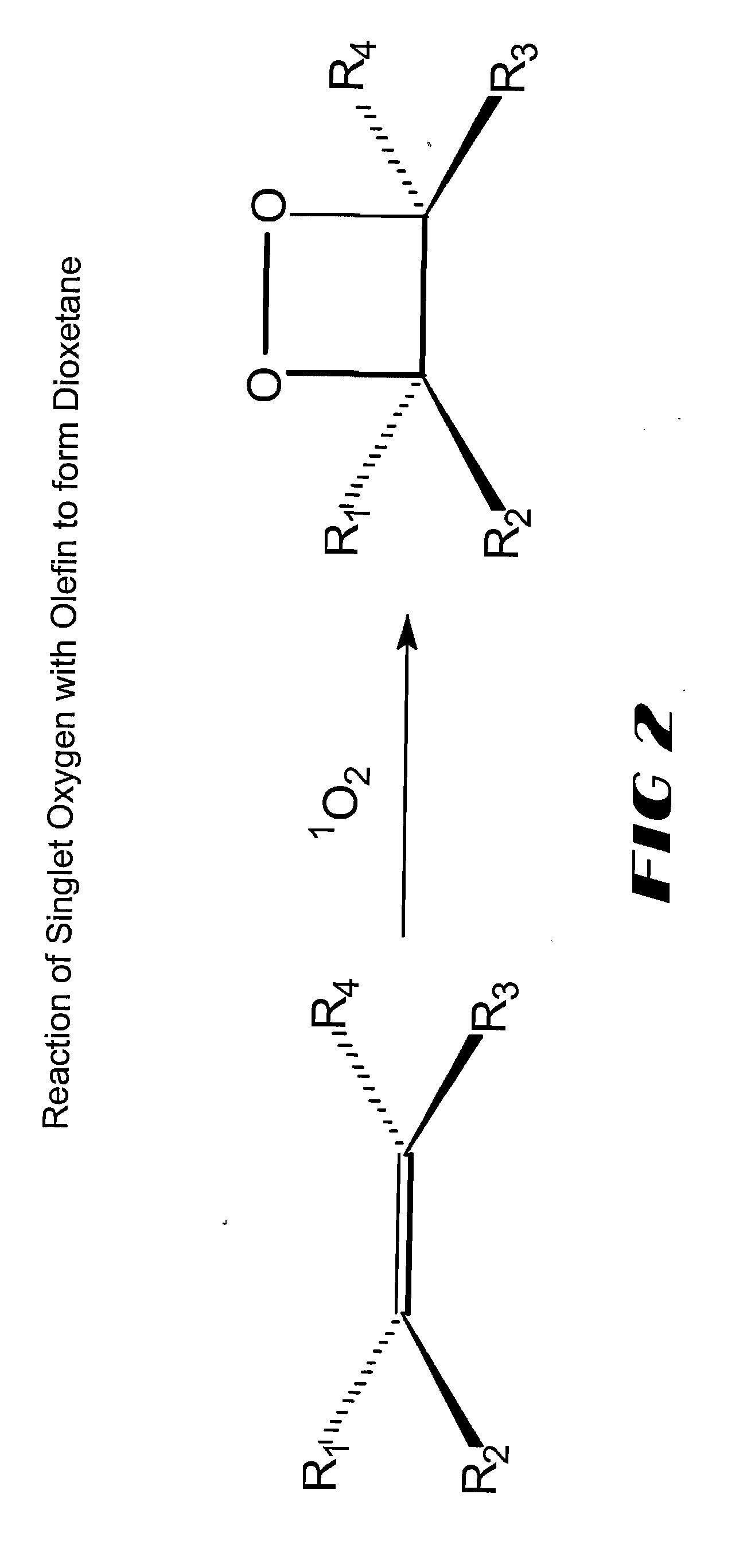Sensitizer-labeled analyte detection
a technology of sensitizers and analytes, which is applied in the field of sensitizer-labeled analyte detection, can solve the problems of increasing the number of reagents, requiring many steps, and requiring more time to complete the assay
- Summary
- Abstract
- Description
- Claims
- Application Information
AI Technical Summary
Problems solved by technology
Method used
Image
Examples
example 1
Preparation of Aminoreactive Photosensitizer
[0059] An activated N-hydroxysuccinimide ester form of a methylene blue sensitizer was obtained according to procedures described by Motsenbocker et al. Photochem. Photobiol., 58, 648-652 (1993).
example 2
Preparation of Functionalized dUTP and Oligonucleotides
[0060] Aminofunctionalized dUTP was purchased from: Molecular Probes, Eugene, Oreg., USA.
[0061] The 5′-aminomodified oligonucleotides, carboxyfunctionalized as well as unmodified oligonucleotides described in the examples below were synthesized on a PE Biosystems Nucleic Acid Synthesizer, Model No. ABI 3948 using methods well known in the art.
example 3
Detection of Sensitizer-Labeled Target Nucleic Acid
[0062] Sensitizer-labeled nucleic acid was spotted on a Hybond+nylon membrane (Amersham Biosciences Corporation), along with negative controls at various concentrations ranging from 25 to 500 fmoles in a total volume of 1 μl. The positive control consisted of 1 μl of 100 fmoles of dicarboxylmethylene blue dye (EMP Biotech, Berlin, Germany). After spotting, the membrane was dried at 65° C. for 10 minutes, followed by dipping the membrane in an olefin solution (1 / 100% w / v in hexane or methanol) wherein olefin was synthesized by the method of Schaap as described in U.S. Pat. No. 4,857,652 and allowing it to air dry, then illuminating the spotted surface with red light for 15 minutes to excite the sensitizer dye and form a triggerable dioxetane. In order to detect the signal, the dioxetane was first triggered. In one format, a sheet of filter paper previously soaked in a saturated solution of ammonium carbonate and then dried to a soli...
PUM
| Property | Measurement | Unit |
|---|---|---|
| wavelength | aaaaa | aaaaa |
| wavelength range | aaaaa | aaaaa |
| temperature | aaaaa | aaaaa |
Abstract
Description
Claims
Application Information
 Login to View More
Login to View More - R&D
- Intellectual Property
- Life Sciences
- Materials
- Tech Scout
- Unparalleled Data Quality
- Higher Quality Content
- 60% Fewer Hallucinations
Browse by: Latest US Patents, China's latest patents, Technical Efficacy Thesaurus, Application Domain, Technology Topic, Popular Technical Reports.
© 2025 PatSnap. All rights reserved.Legal|Privacy policy|Modern Slavery Act Transparency Statement|Sitemap|About US| Contact US: help@patsnap.com



